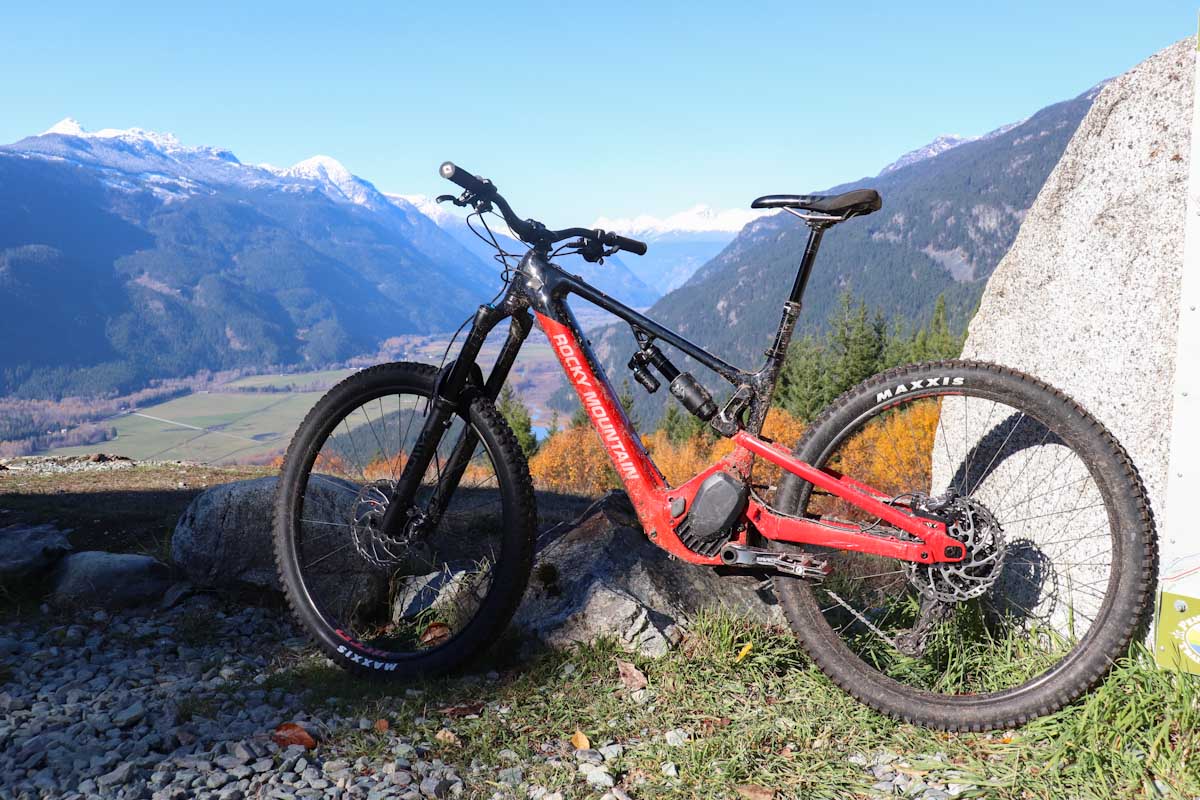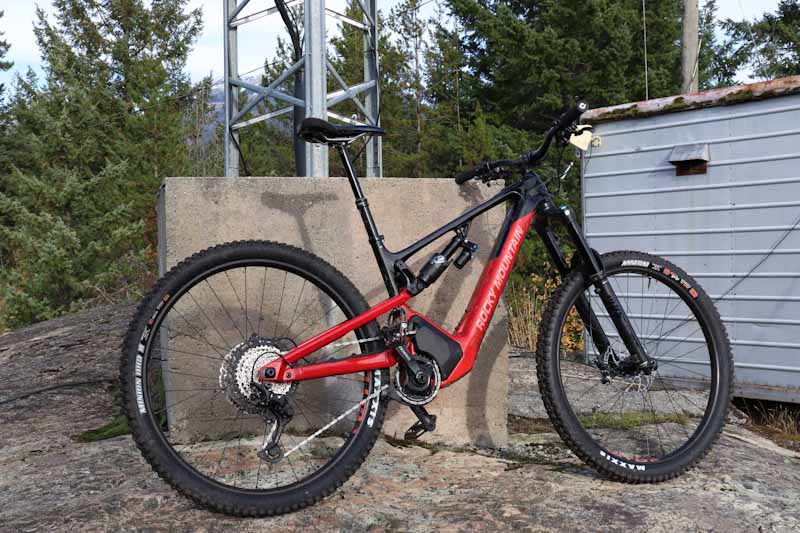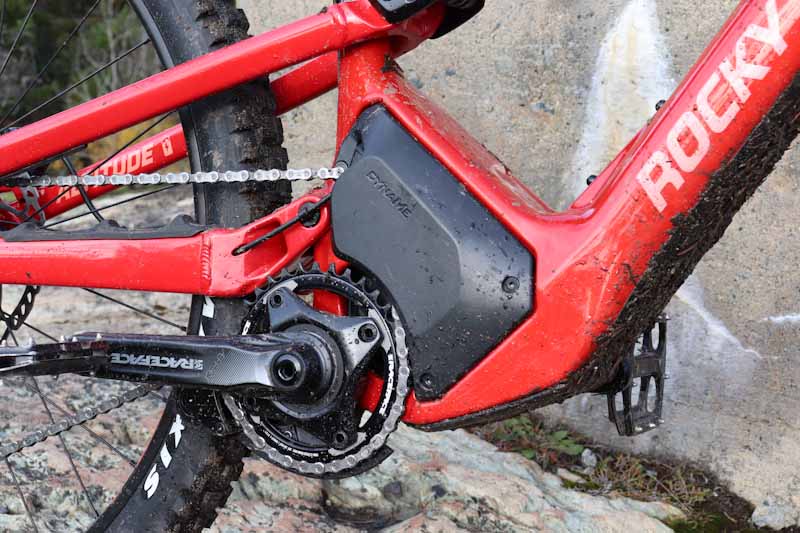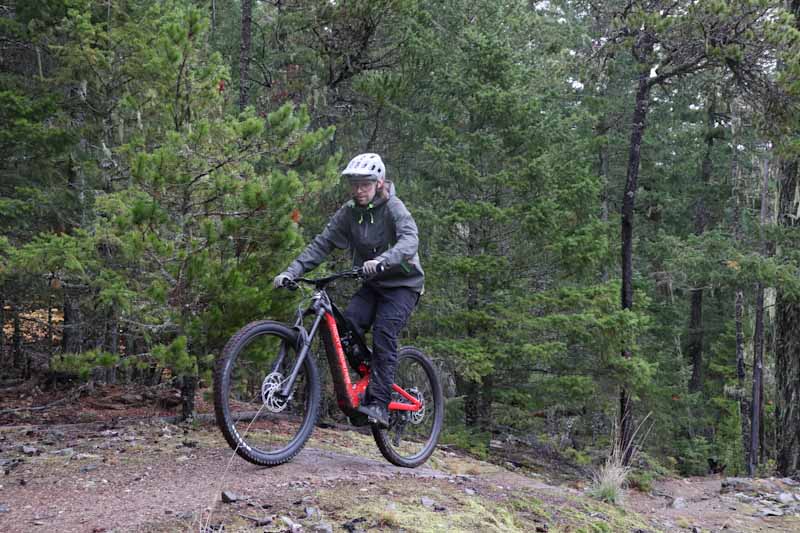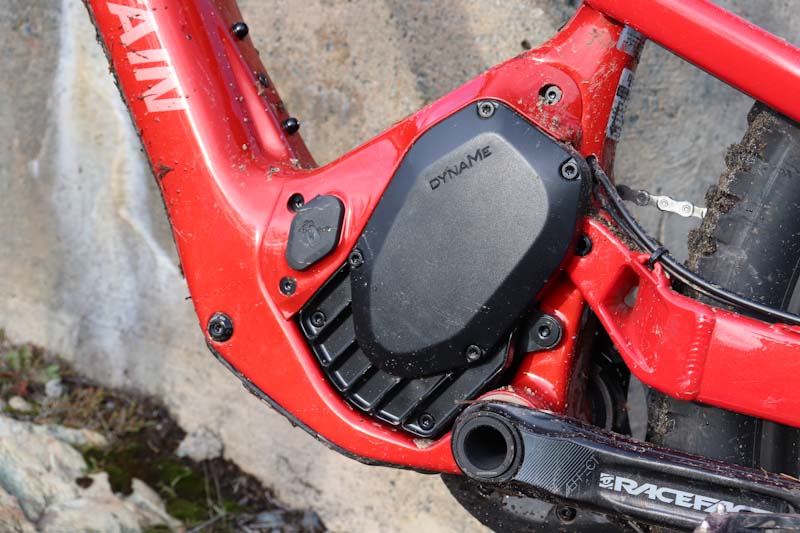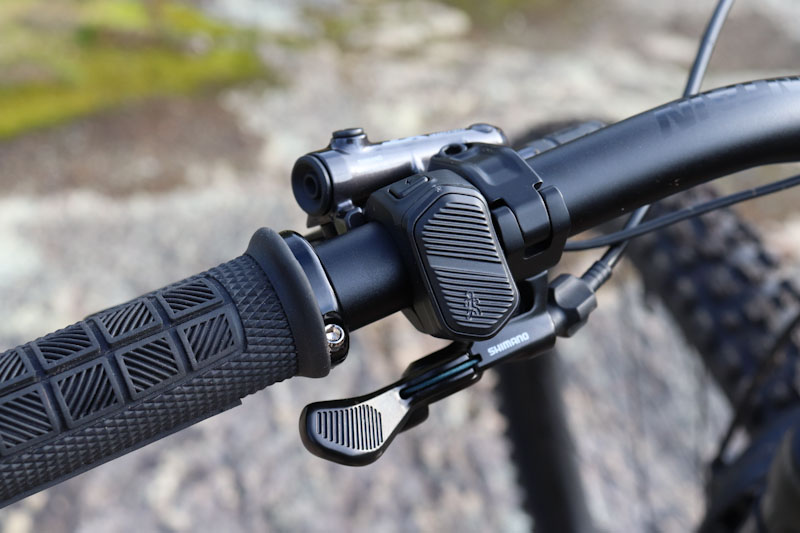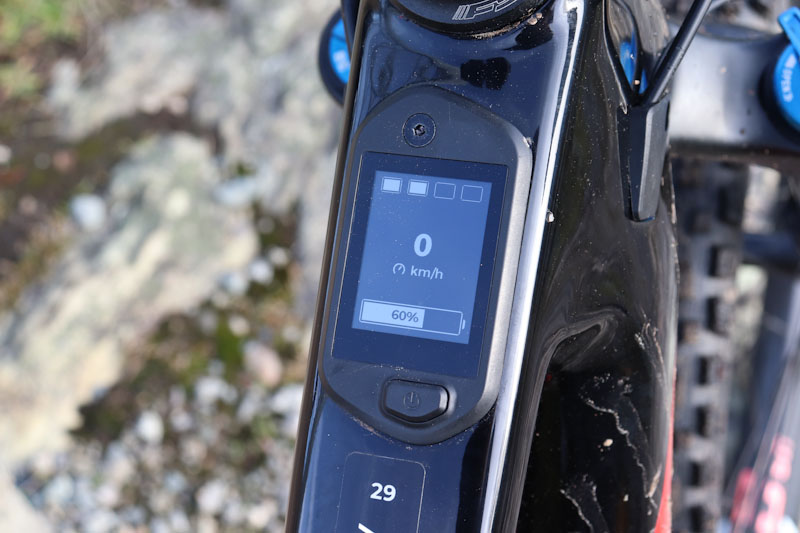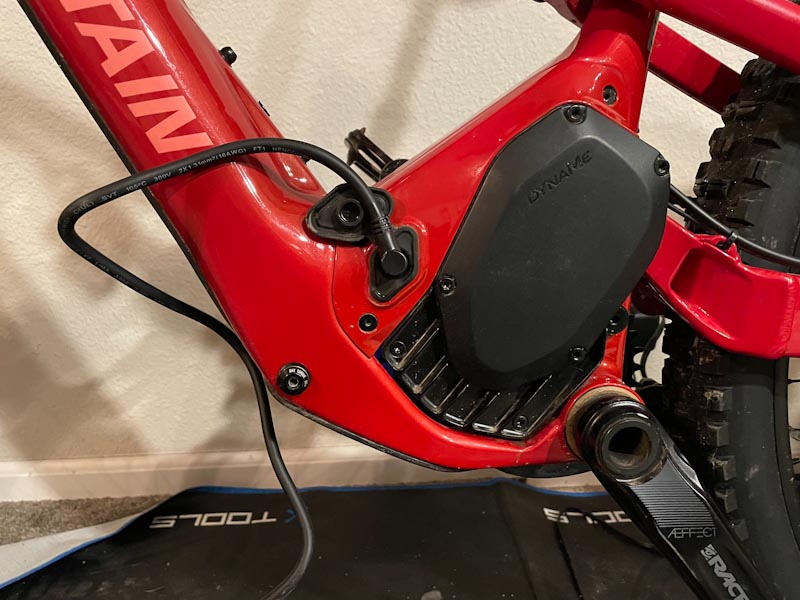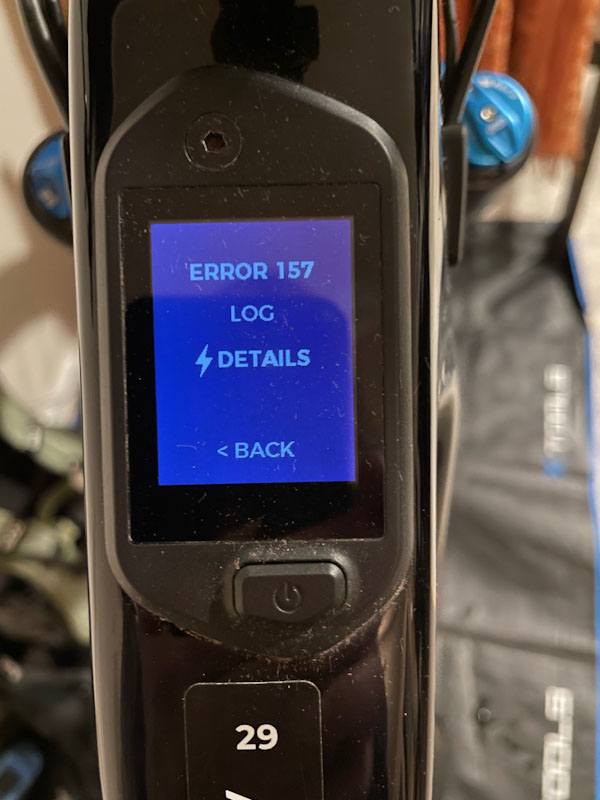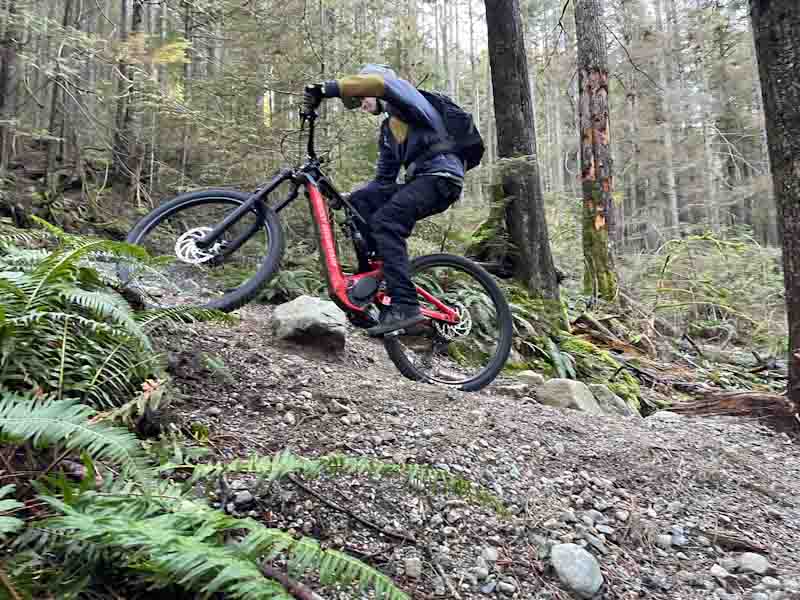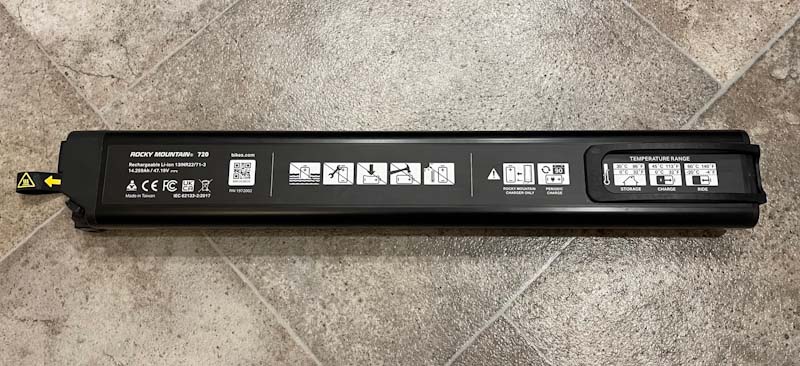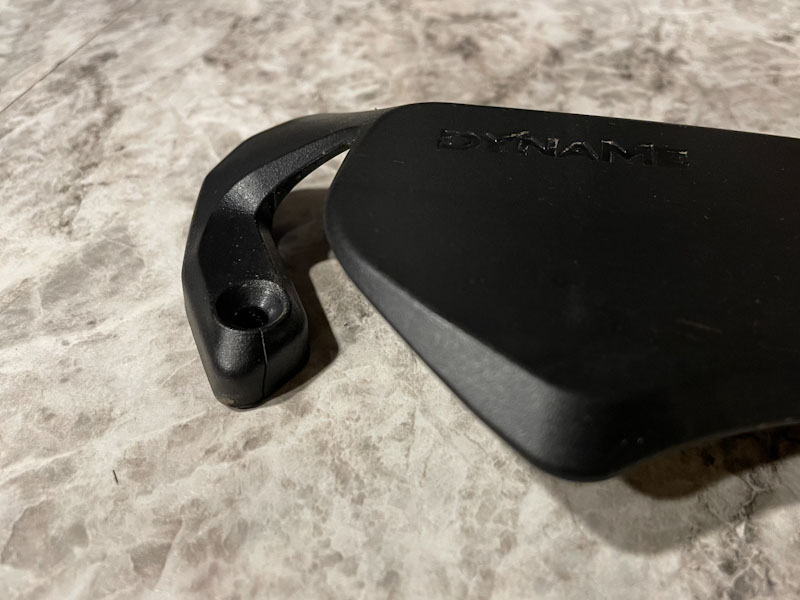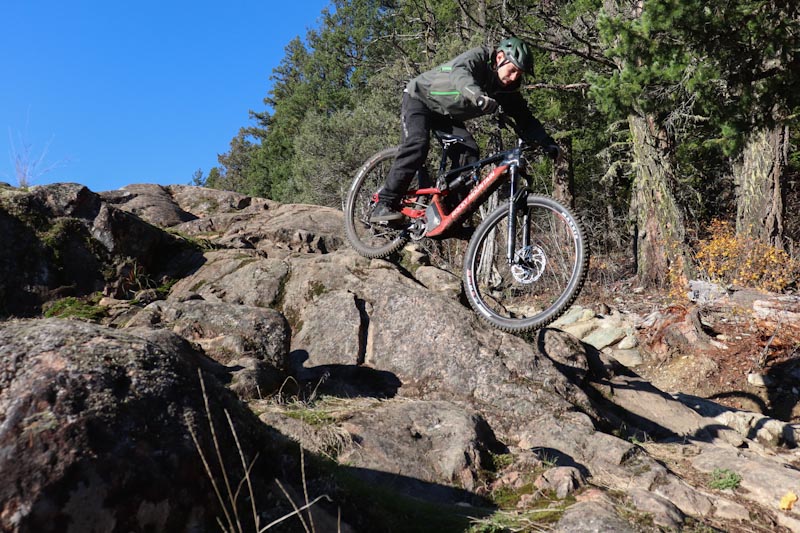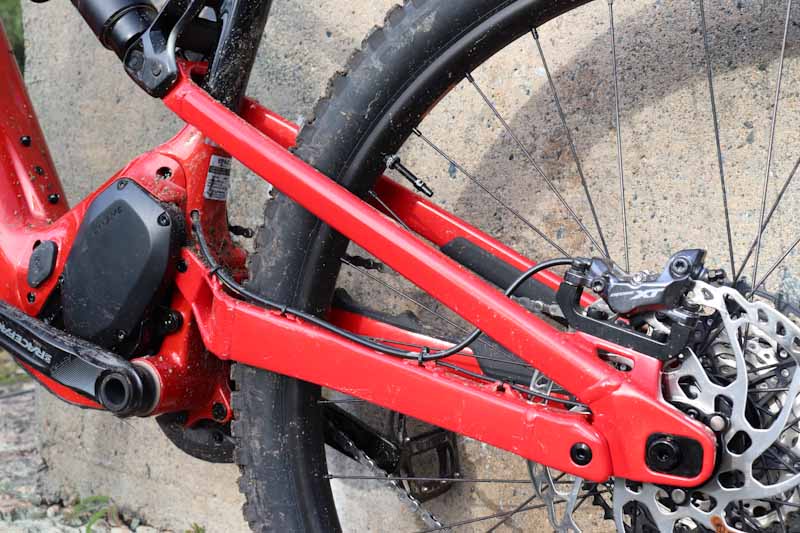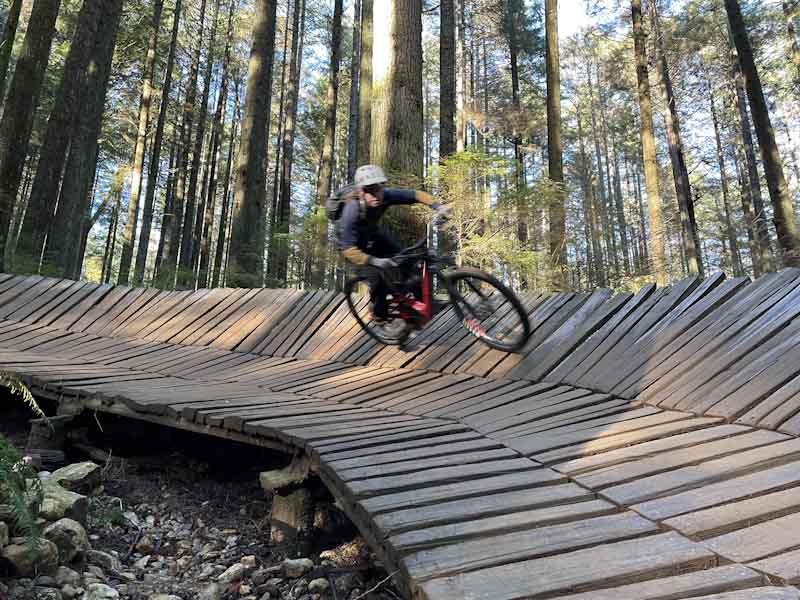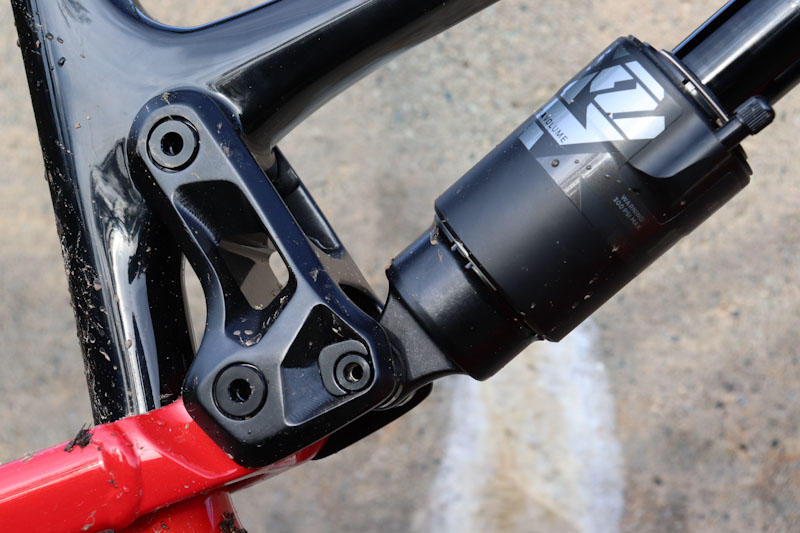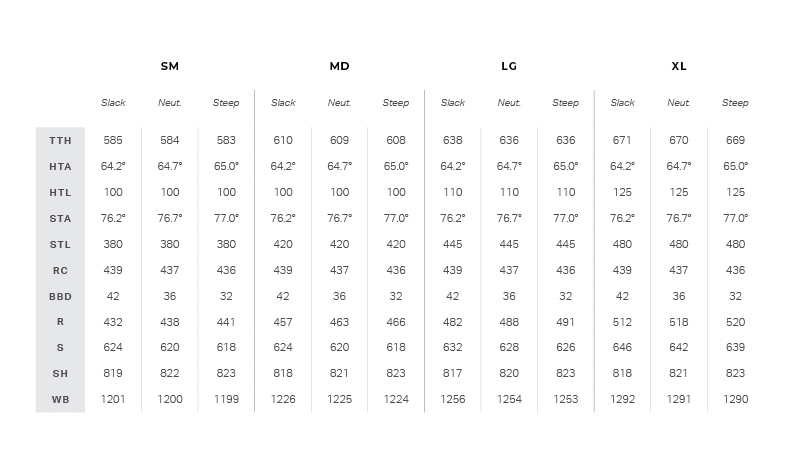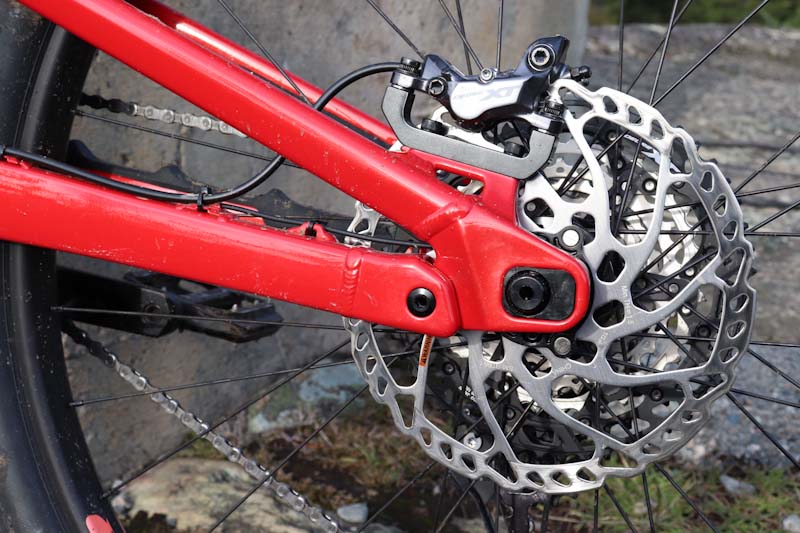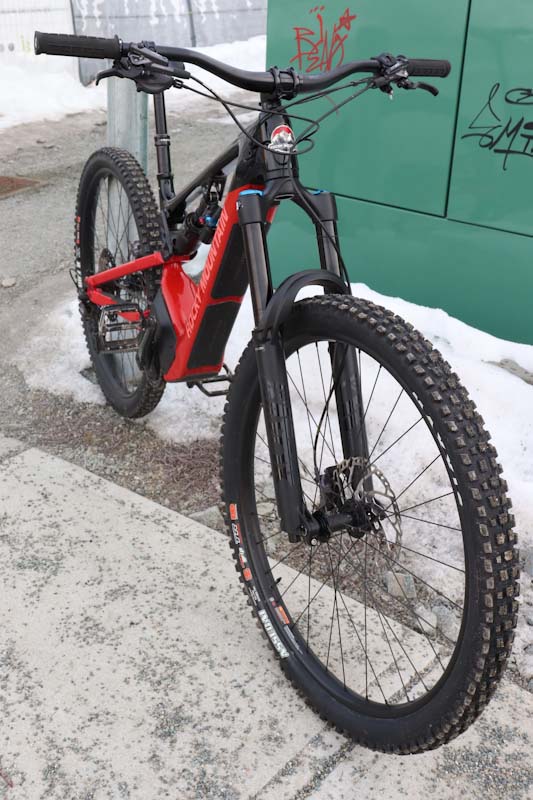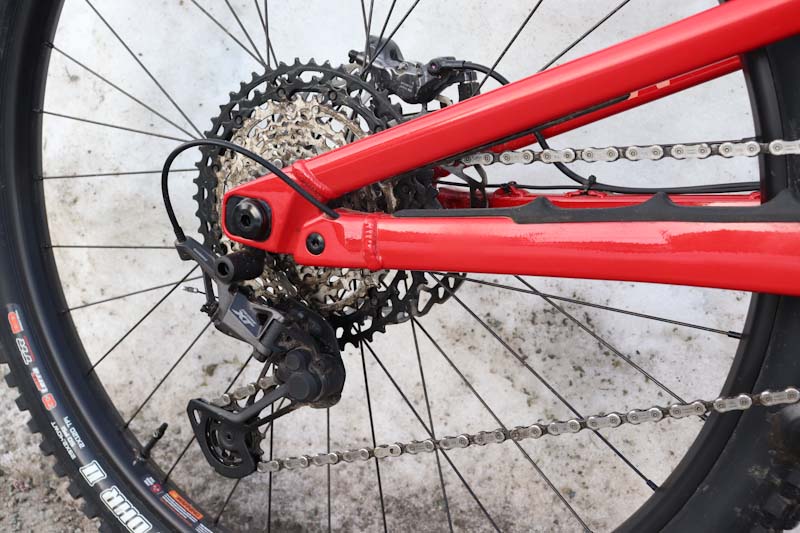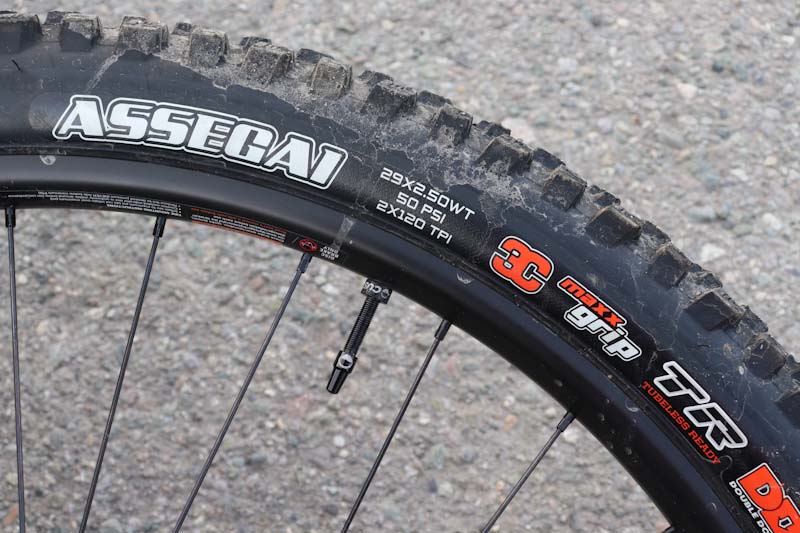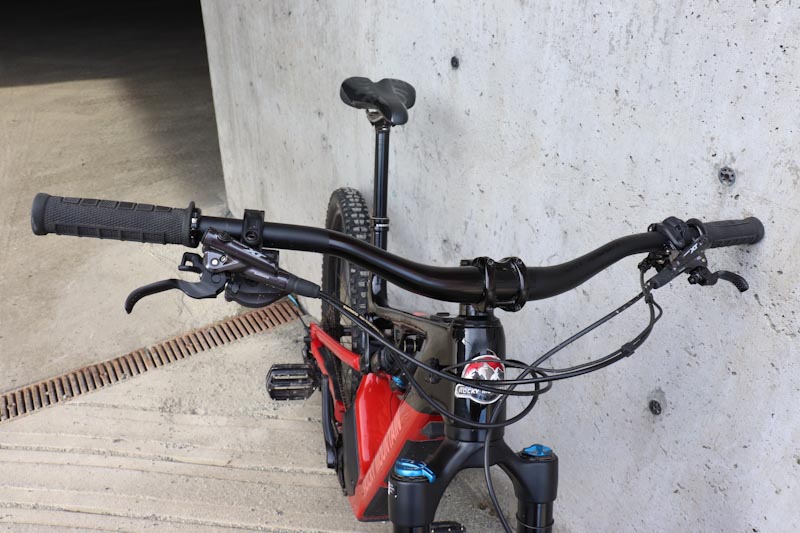A few years ago having a long travel 29er with meaty tires and slack geometry was about the most capable bike you could get… but then we added motors! With a huge battery, loads of power output, modern (and adjustable) frame geometry, 170/160mm travel, and 29” wheels, Rocky Mountain Bikes’ 2022 Altitude Powerplay is an eMTB that can do just about anything… all day long.
I got to ride the Altitude Powerplay Carbon 70 throughout last fall/winter until heavy snow ended my season. In January I was told the bike had to be sent elsewhere so I headed to Vancouver’s snow-free trails for a final test ride. And at the last minute, things got interesting…
2022 Altitude Powerplay – Key Specs:
There’s a lot to talk about with this bike, so link to my launch article for all the details on frame construction, suspension, geometry, and build specs on the 2022 Altitude and Instinct Powerplay bikes.
To sum it up quickly, the Altitude Powerplay offers very similar geometry to the non-powered Altitude so it’s fully up-to-date with sizing and angles. Thanks to its Ride 4 chip and chainstay flip-chip, there’s an impressive range of geo fiddling that can take the bike from enduro sled to backcountry explorer with a few twists of an Allen key.
The Carbon 70 model I rode has a carbon front end and an aluminum rear and rides on 29” wheels. With its massive 720wH battery, RMB’s listed weight of 51.8lbs for the Altitude Powerplay Carbon 70 is pretty reasonable.
Ride Impressions – Electronics:
Let’s start with the most important part of the eMTB’s electronic components: the motor. I started out riding the Altitude Powerplay as an eMTB rookie, so I definitely put this thing to the smoothness test! This bike taught me the different cadence and pedalling techniques required for riding eMTBs at their best, and its smooth power delivery handled my initial hacking impressively well.
Once I got familiar with the bike, it was basically faultless in terms of predictability and appropriate power delivery. The Altitude Powerplay does a great job of providing boost at the right time, so as long as you’re near the ideal gear this bike will help you get up almost anything. I didn’t even adjust the response level or overall Boost levels, and I’m not sure I’d ever feel the need since the factory settings felt great. It is always nice to have that option, though.
After my short learning curve, the Altitude Powerplay never surprised me by lurching forward or not delivering power when expected, and I never felt the need to pedal in an awkward manner to maintain assist from the motor. I also noticed the bike handled rapid up/down terrain predictably and reliably, switching on and off just as you’d expect it to.
With the new motor’s 108Nm max output, the Altitude Powerplay offers class-leading power. I can’t compare it to many other eMTBs, but I can say it never left me wanting. I didn’t ever feel the need to climb singletrack in the highest ‘Ludicrous’ mode (I tried it on the street, it is definitely ludicrous!).
Despite all that power, the new Dyname 4.0 motor runs quietly. I rode with several other eMTBs (including Specialized and Commencal) and noticed the others were louder by comparison. It’s not like you can’t hear it working, but the updated motor is impressively quiet.
As for controls, I had no issue figuring out any adjustments, calibration, or setup with the Altitude Powerplay (and I am not a tech genius). RMB’s system is simple, with everything controlled by the Micro Remote on the handlebar and the single button on the ‘Jumbotron’ top tube screen. There are several main display screen options that prioritise different ride data, and it’s easy to select your favourite.
One thing I really like about the 2022 Altitude Powerplay is that there’s no app for it! I know some people might lament the lack of an app, but I’m a fan of keeping things simple. The bike itself handles all settings, adjustments, and diagnostics, so why add another piece to the equation?
The Altitude Powerplay’s battery life proved to be as promised. I was easily getting at least 8 hours of ride time on a full charge, mostly toggling between Trail and Trail Plus modes. The battery drains consistently as well, so you don’t blow through your last 25% faster than the first 25%. Battery charging was as quick as promised too, taking just four hours for a full charge (with the 4A charger, included with most models).
Electrical Issues:
Unfortunately, this spring, as I prepared for my final ride on the Altitude Powerplay I encountered some electrical issues. After the bike sat for several weeks (indoors) I charged the battery for four hours… and the bike would not turn on! This was a one-time incident, and I can’t explain why it happened.
I fully charged the battery again, and this time the bike turned on but the Jumbotron display showed 30% battery life. I attempted to charge the battery three more times, and throughout this, the battery life still showed at 30%. Since I had to give the bike back very soon, I took it for its last ride despite the issues. During this ride, the battery life started at 30% on the Jumbotron and appeared to be draining normally. Also, the bike performed perfectly, assisting through every power level as it always had.
After that ride, following Rocky Mountain’s instructions, I removed the battery from the frame. The battery itself has an LED indicator light and can be plugged directly into the charger, and when I connected them the battery’s LED immediately showed it had a 50-75% charge (not consistent with the bike’s display). Within an hour the battery life showed at 75-100%, indicating that it was accepting a charge.
RMB’s powerplay technician also told me to check the bike for error codes, and I found one. With the click of a few buttons, the diagnostic menu showed me I had produced an error 157. The description on the display said the bike’s torque arm could be dirty, jammed, or damaged. It also indicated that the torque sensor thought there was pressure on the pedals when there wasn’t.
Somehow I never noticed, but the bike should show an error code on its main screen when it occurs. I know which ride I was on when it happened, but I didn’t see the warning on the Jumbotron. Unfortunately, I’m not sure how I set off the error code.
Being a rookie with eMTBs, I made an incorrect assumption at this point; I assumed the error 157 needed to be dealt with before the bike was safe to ride, but that’s not the case. If the calibration goes way off, the bike may lag in delivering power or cut out periodically, but you won’t damage anything by continuing to ride. In my case, I had no power delivery issues on my last two test rides.
When an error 157 is produced, the bike’s diagnostics will instruct you to ensure the torque arm isn’t obstructed (I didn’t get that far before returning the bike so I can’t explain how to do that), then re-calibrate the bike (that part’s easy). Given that RMB did not find any issues with the torque arm, I likely could have just re-calibrated the bike and resolved the error.
It’s important to know that the error code will remain in the error log after you’ve addressed the issue –they don’t disappear when the problem is corrected. Several error codes will remain in the log to aid future diagnoses, which could be handy for mechanics, but leaves it a bit unclear if you the rider have resolved an issue. Logged error codes can be cleared, so I suppose you could erase them and see if they return.
On my final test ride, I had another problem with the display and battery not communicating. Throughout this ride, it looked as if the battery wasn’t draining at all. After nearly an hour of lapping hills entirely in Ludicrous mode, I still had 100% charge showing on the Jumbotron. A day later, I switched on the bike and the display showed 86%, which seemed accurate.
Unfortunately, after the bike was given back RMB could not replicate the communication issues I had between the battery and Jumbotron, so the cause of that problem remains unknown. The good news is, there may only be a small number of early-production Altitude Powerplays that experience this problem: While we were diagnosing the issues, Rocky Mountain’s North American Tech Field Specialist Olivier Courchesne stated in an email “…we are confident that this fluke would only apply to a limited run of the pre-production display.”
Regardless, it is definitely concerning to have an issue with electronic components after less than 200 km of riding, on a bike that’s only a few months old. To be fair to RMB every person I know who owns an eMTB has had at least one problem with their bike, but at far higher mileages than my issues.
While diagnosing the electrical issues, I had another unfortunate incident occur. After removing and re-installing the motor cover once, it cracked as I was replacing the upper bolt! The cover wasn’t cold at the time, and I was surprised to hear the crack as I had just started getting some purchase on the bolt. I am not prone to over-tightening things, so I must warn Powerplay owners to be very gentle with these bolts.
Suspension:
I set up the Altitude Powerplay similarly to other RMB bikes I’ve tested – I stay pretty close to factory recommended settings, except for running rebound on the slow side. In the Altitude’s Fox Float X2 Performance rear shock, I had 178psi (Rocky’s linkage requires more than your body weight, I weigh 145lbs), with the LSC kept fairly low and the LSR right in the middle.
The Float X2 Performance shock offers Firm and Open settings. I found the Firm setting is ideal for the best pedalling performance on roads or smooth packed surfaces, but otherwise, I kept the shock Open for all my trail riding. Given the motor’s assist, efficiency isn’t as crucial as on a normal bike, so you can enjoy a more comfortable ride without your legs paying a price.
The Altitude Powerplay’s linkage does have one significant difference from other Rocky MTBs, and that’s the mid-high main pivot location. This change was obviously made to accommodate the motor, and it doesn’t give the Altitude Powerplay a vastly different ride than RMB’s other trail/enduro bikes. That said, the weight of the motorized bike does have an effect on suspension feel.
With the extra weight of the electronics, the Altitude Powerplay’s small bump sensitivity and traction are better than a normal trail bike! Keeping your wheels glued to the ground is easier when it takes significantly more effort for them to bounce or lift, so you should generally expect a smoother and more stable ride from an eMTB. On big bumps and really rough trails, the bike performed at least equally to the Altitude I tested during fall 2020, using its generous travel to eat up big hits. Rocky’s rear end doesn’t erase all feeling from the trail below, but traces over big bumps quickly and keeps your rear wheel stuck down over uneven terrain. Even in the really rough stuff, the added weight did translate into a slightly more planted ride.
As for progressivity, that is tunable with Rocky Mountain’s Ride 4 (or Ride 9) chipped bikes. I was riding the Altitude Powerplay in its neutral position, which was appropriate for me. I’m not a heavy or super-rough rider so keeping the progression in the mid-setting allows me to use all the bike’s travel on the hardest hits but still have sufficient mid-stroke support and bottom-out resistance.
Of course, the Powerplay’s weight does make the bike far less poppy than RMB’s non-assisted bikes. When hopping over roots or popping off bumps, you don’t get a helpful boost from the shock-like you do on the Instinct I reviewed last spring.
Geometry:
The Altitude Powerplay’s geometry is up to date and felt quite comfortable to me (I’m 5’10” and riding a Medium frame). I like the generous, but not crazy reach range of 450-458mm. With the chainstay flip-chip rear end length can be anywhere from 436mm to 449mm, so you can have whatever you want, from stubby to stretched.
RMB’s angles are progressive, but not outside the box. The Altitude Powerplay’s steering is certainly on the slacker end, ranging from 63.5° to 64.3°. The seat mast angle of 75.5-76.3° is typical for a modern enduro bike, leaning your weight over the front end for a well-balanced ride. Rocky Mountain has definitely honed their current geometry to offer that centered, ‘in the bike’ feel that a trail/enduro bike should provide.
I rode the Altitude Powerplay with the Ride 4 chip in Pos. 3 (Neutral), giving me a reach of 455mm, a head tube angle of 64°, seat mast of 76°, and 437mm chainstays. This kept the BB a bit higher (ideal to avoid crank/pedal strikes on the assisted bike) left the rear end fairly short, and seemed like the best ‘do everything well’ option for a bike I knew I’d be doing plenty of climbing and traversing with.
After testing several recent RMB bikes, I have played with their chainstay adjustment chip and found it makes a palpable difference to a bike’s handling. On the non-electric Altitude, I preferred the long mode since it only emphasized the downhill capabilities of Rocky’s enduro race bike. However, I decided to keep the Altitude Powerplay in its short setting throughout my test.
Given the assist, I did more climbing than I would on a regular bike so it made sense to leave it in its nimbler chip position. The Altitude Powerplay is already a large bike by any means, so there’s no lack of stability in any of its chip settings. That said, if you’re using this bike as a self-shuttle to thrash fast descents, you’ll likely prefer the long setting’s added stability.
Components:
Up front I’m running the 170mm Fox 38 Float EVOL Grip Performance fork with air pressure and rebound ‘as recommended’, and with the compression wide open. The fork’s performance easily met my expectations, offering smooth bump absorption and no lack of stiffness, even on this beastly bike.
The Altitude Powerplay Carbon 70 comes with a Shimano XT drivetrain, which delivered crisp and reliable shifting throughout my test. The XT Trail 4-piston brakes (with 203mm rotors) proved themselves on the eMTB; In spite of the bike’s weight, I just rode normally, feeling no need to brake earlier into corners or squeeze the levers harder than usual.
The WTB ST i30 TCS 2.0 wheels survived my testing with no dents or hops in either and only a slight 1-2mm wobble in the rear. No doubt they were helped out by the factory-installed Cush Core XC tire inserts, a very thoughtful inclusion for a bulky bike that’s built for rough riding. As a lighter-weight rider, I don’t run inserts in my personal bike but having them on the Altitude Powerplay gave me a lot of peace of mind as I thrashed down rocky trails. I definitely noticed the additional shock absorption they provide I don’t remember a single significant rim smash throughout my testing. To top that off, RMB stocks a proven set of triple-compound Maxxis Assegai/Minion DHR II treads, which provide tons of traction on all surfaces.
Having a 170mm dropper post is great for a Medium frame, and while I’ve had reliability issues with several RaceFace posts in the past the Aeffect R model on this bike worked pretty well flawlessly. I’ve ridden many RMB bikes with WTB’s Volt saddles, and they jive with my backside just fine.
Rocky Mountain supplies the cockpit with their 780mm wide, 38mm rise AM handlebar, and a 40mm AM stem. For an eMTB which will probably encourage longer rides, it makes sense to offer a comfortable ride position with the higher handlebar but aggressive riders might find it a bit tall.
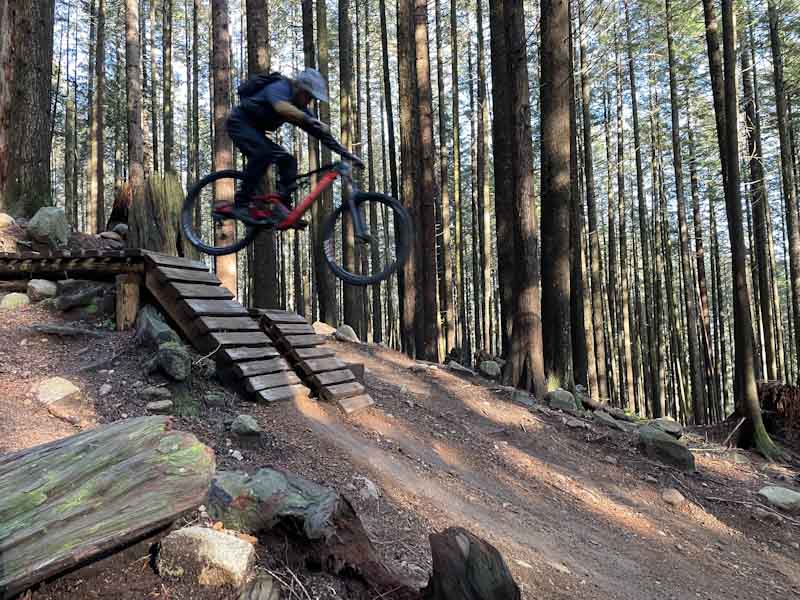
Aside from the electrical issues, I was very impressed with the Altitude Powerplay Carbon 70. The motor delivers plenty of power smoothly and predictably, the battery offers tons of ride time, and the electronic functions are easy to operate. Put all this onto an enduro frame with proven geometry and suspension, and you’ve got one killer eMTB that can handle any terrain.
MSRP for the 2022 Altitude Powerplay Carbon 70 is $9059 USD. Frame sizes S-XL are available in either Cinnamon Girl/Black Dog/Love Me Tender (Orange/Black) or War Machine/Black Dog/Enter Sandman (Green/Black).
